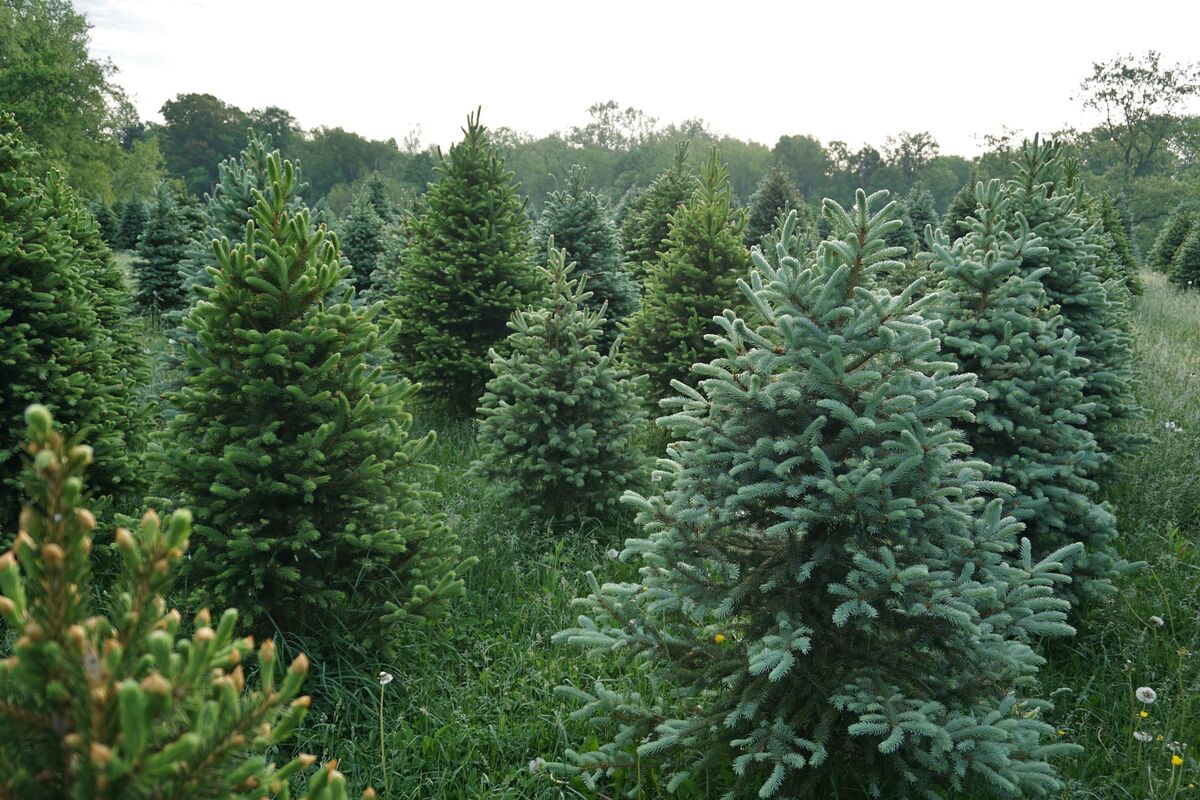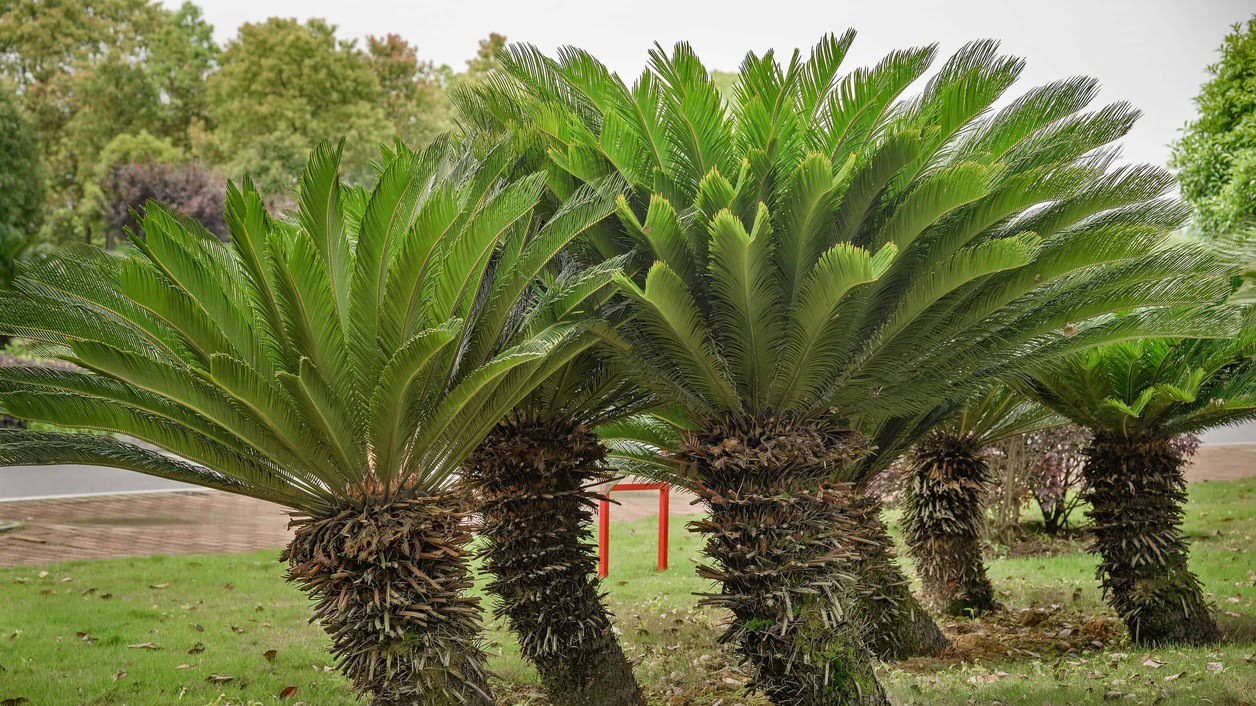Home>Gardening News and Trends>Latest News>Where Do Palm Trees Originate From


Latest News
Where Do Palm Trees Originate From
Modified: January 22, 2024
Discover the fascinating origins of palm trees with the latest news. Find out where these majestic trees first originated from and how they have become a beloved symbol of tropical paradise.
(Many of the links in this article redirect to a specific reviewed product. Your purchase of these products through affiliate links helps to generate commission for Chicagolandgardening.com, at no extra cost. Learn more)
Table of Contents
Introduction
Palm trees, with their iconic silhouette and lush foliage, have long captured the imagination and admiration of people around the world. These majestic trees evoke images of tropical paradise, swaying gently in the warm breeze along pristine sandy beaches. But have you ever wondered where palm trees originate from and how they have come to be such an integral part of various landscapes?
In this article, we will explore the fascinating history, geographic distribution, and cultural significance of palm trees. We will delve into their ancient origins, remarkable evolution, and the vital role they play in ecosystems. We will also discuss the challenges they face and the ongoing conservation efforts to protect these beloved trees.
From the towering coconut palms of the Pacific Islands to the date palms of the Middle East, palm trees have a diverse range of species and habitats. Their distinct characteristics and ability to thrive in different climates have made them admired and cherished by people across continents and cultures.
The origins of palm trees can be traced back millions of years to the ancient world. Their evolutionary journey has spanned continents and epochs, adapting to changing environments and developing unique features along the way.
Throughout history, palm trees have held great cultural significance. They have been symbols of resilience, beauty, and abundance in various societies. From providing livelihoods through the cultivation of coconut palms, to being a focal point in religious rituals and celebrations, palm trees have shaped the lives and traditions of many communities.
Furthermore, palm trees play a crucial role in maintaining the delicate balance of ecosystems. They provide shelter and food for numerous species of animals, contribute to the stabilization of soil, and play a vital role in regulating the water cycle.
Despite their importance, palm trees face numerous threats, including habitat destruction, climate change, and invasive species. Conservation efforts are underway to protect and preserve these remarkable trees and their diverse habitats.
Join us on this journey to discover the origins, significance, and conservation of palm trees. Through this exploration, we hope to deepen our appreciation for these botanical wonders and inspire a collective effort to safeguard their future.
Brief History of Palm Trees
The history of palm trees stretches back millions of years, making them one of the oldest tree species on our planet. Fossil evidence suggests that palm-like plants existed during the time of dinosaurs, with their origins dating back to the late Cretaceous period.
These ancient trees evolved in the lush tropical forests of the supercontinent Gondwana, which later fragmented into the continents we know today. As the landmasses drifted apart, palm trees dispersed across different regions, adapting to diverse climates and landscapes.
During the Paleocene and Eocene epochs, palm trees experienced a period of widespread diversification and expansion. Fossil records show that palm species were abundant in Europe, North America, and even the Arctic regions during this time.
The movement of palm trees continued throughout the ages, with the spread of palms across continents facilitated by bird and animal dispersal. Birds, such as parrots and pigeons, played a vital role in the distribution of palm seeds, as they would eat the fruits and then spread the seeds through their droppings.
As humans migrated and settled in different parts of the world, palm trees became integral to various cultures and societies. The use of palm products, such as leaves and fibers, for weaving and construction dates back centuries. Palm fruits, such as coconuts and dates, have provided a source of sustenance and trade for many communities.
The exploration and colonization of new lands during the Age of Discovery further contributed to the dissemination of palm trees. Portuguese and Spanish explorers introduced coconut palms to the Americas and Pacific Islands, forever altering the landscapes of these regions.
Today, palm trees can be found in a wide range of habitats, from tropical rainforests to arid deserts. They thrive in places such as the Caribbean, Southeast Asia, Africa, and the Mediterranean, each region boasting unique species and adaptations.
Beyond their natural habitats, palm trees have become iconic symbols associated with vacation destinations, luxury resorts, and paradise imagery. Their unmistakable silhouette, with their long, slender trunks topped with elegant fronds, has become synonymous with relaxation and tranquility.
While palm trees have undoubtedly left an indelible mark on our cultural and natural landscapes, it is essential to recognize the potential risks they face. As palm oil plantations expand and natural habitats are destroyed, many palm species are at risk of extinction. Efforts are being made to strike a balance between the cultivation and conservation of these remarkable trees.
As we delve deeper into the geographic distribution and adaptations of palm trees in the next sections, we will gain a better understanding of their rich history and the reasons behind their incredible success as a species.
Geographic Distribution of Palm Trees
Palm trees are found in various regions across the globe, from tropical rainforests to arid deserts. Their ability to adapt to different climates and landscapes has allowed them to establish themselves in diverse habitats. Let’s explore the geographic distribution of palm trees and the unique species found in each region.
Tropical regions are known as hotspots for palm diversity. The Amazon rainforest in South America is home to numerous palm species, including the majestic Açaí palm (Euterpe oleracea) and the versatile Buriti palm (Mauritia flexuosa). These palms provide food, shelter, and resources for both wildlife and local communities.
In Southeast Asia, the rainforests of Indonesia, Malaysia, and the Philippines boast a rich variety of palm species. The iconic coconut palm (Cocos nucifera) is prominent in this region and provides an essential source of sustenance, with its fruits, oil, and palm sugar being widely used in local cuisines.
Moving to the African continent, the Congo Basin rainforest harbors numerous palm species, including the African Oil Palm (Elaeis guineensis), which is cultivated for its oil. In the arid regions of Africa, the Date palm (Phoenix dactylifera) thrives, with its sweet fruits and shade-bearing fronds being highly valued.
In the arid landscapes of the Middle East, the Date palm is also a prevalent species. Its cultivation dates back thousands of years, with the fruits providing a staple food source and the fronds used for shelter and construction. The iconic image of a palm oasis in the midst of a desert landscape is synonymous with this region.
Other notable regions with a significant presence of palm trees include the Caribbean islands, where species like the Royal palm (Roystonea regia) and the Coconut palm can be found. The Mediterranean region also showcases palm species, such as the Mediterranean Fan palm (Chamaerops humilis), adding a touch of tropical beauty to this temperate zone.
With their ability to adapt and thrive in various climates, palm trees have also been introduced to new regions through human activities. Coconut palms, for example, have been planted in coastal areas around the world, transforming landscapes and providing valuable resources in places far from their original habitats.
While the distribution of palm trees is widespread, it is important to note that each species has specific environmental requirements. Some thrive in hot and humid conditions, while others can tolerate drought or colder temperatures. Understanding these preferences is crucial in conservation efforts and ensuring the appropriate management of palm tree populations.
As we continue our exploration of palm trees, we will dive deeper into their evolution, ancient origins, and the remarkable adaptations that have allowed them to colonize such diverse habitats around the world.
Ancient Origins of Palm Trees
To uncover the ancient origins of palm trees, we must journey back in time, millions of years ago, to unravel their evolutionary history. These remarkable trees have a lineage that stretches back to the era of dinosaurs, making them an ancient and resilient group of plants.
Fossil records provide evidence of palm-like plants dating back to the late Cretaceous period, approximately 80 million years ago. These early ancestors of modern palm trees belonged to the group known as the Arecaceae family, which includes over 2,500 species today.
Throughout the Tertiary period, which spans from around 65 to 2.6 million years ago, palm trees experienced a period of diversification and expansion. Fossil evidence from this time reveals a wide range of palm species, from small ground-dwelling plants to lofty tree-like forms.
During this era, the supercontinent Gondwana began to break apart, giving rise to the continents we know today. As the landmasses fragmented, palm trees dispersed and adapted to different environments across the globe.
It is believed that palm trees originated in what is now South America. Fossil findings in Patagonia, Argentina, provide insights into the early evolution of these trees. Fossils dating back over 60 million years exhibit characteristics similar to modern palms, indicating an early diversification of palm species in this region.
From South America, palm trees spread to other continents, following the drifting landmasses. They reached Europe around 50 million years ago, during a time when the climate was much warmer and more tropical than it is today. Fossils found in Europe indicate the presence of palm-like plants in regions such as Germany and Britain.
The dispersal of palm trees continued as the continents continued to shift and reshape. By the late Eocene epoch, approximately 35 million years ago, palm trees had spread across the globe, reaching North America, Africa, and even the Arctic regions.
As palm trees ventured into diverse habitats, they faced numerous challenges and had to adapt to varying climates and environmental conditions. Over time, different species evolved distinctive features, enabling them to thrive in specific regions.
One key adaptation of palm trees is their ability to conserve water. Their leaves, known as fronds, have a waxy coating that reduces water loss through transpiration. This adaptation allows palm trees to survive in arid and desert-like conditions.
Another significant adaptation is the development of unique root systems. Some palm species, like the small, ground-dwelling palms of the genera Chamaedorea and Licuala, have specialized root structures that extract nutrients from the forest floor. In contrast, tall palm trees like the coconut palm and the date palm have deep, anchoring taproots that provide stability in strong winds.
Ancient origins have shaped the diversity and resilience of palm trees that we witness today. By studying the evolution and adaptation of these trees, we gain a deeper appreciation for their ability to survive over millions of years and their continued importance in various ecosystems around the world.
Evolution and Adaptation of Palm Trees
The evolution and adaptation of palm trees have played a crucial role in their success and endurance over millions of years. These remarkable trees have evolved unique characteristics and adaptations that enable them to thrive in diverse habitats around the world.
One of the key evolutionary traits of palm trees is their growth habit. Unlike most trees, which increase in girth as they age, palm trees have a monocot growth pattern. This means that they grow from a single meristem, resulting in a slender trunk that remains relatively constant in diameter throughout their lifespan.
This growth habit allows palm trees to be incredibly tall while maintaining a small footprint. It also enables them to withstand strong winds, as their flexible trunks can bend without breaking. This adaptation is particularly important for palm trees growing in coastal regions or areas prone to tropical storms and hurricanes.
Another distinctive feature of palm trees is their leaves, known as fronds. These fronds come in various shapes and sizes, depending on the species. Some palm trees have feathery, pinnate fronds, while others have fan-shaped, palmate fronds. Each type of frond has its own advantages and adaptations.
Feathery fronds, seen in species like the coconut palm and the queen palm, have numerous small leaflets that increase the surface area for photosynthesis. This adaptation allows these palms to maximize their ability to capture sunlight and convert it into energy.
On the other hand, fan-shaped fronds, found in species such as the Mediterranean Fan palm, are broader and sturdier. These fronds are more efficient at withstanding strong winds and provide greater shade coverage, making them well-suited for arid and desert-like environments.
Palm trees have also developed adaptations to conserve water, an essential trait for survival in arid and semiarid regions. Their waxy cuticles and microscopic structures on the leaf surface reduce water loss through evaporation. Additionally, some palm species, such as the desert palm or the date palm, have the ability to close their stomata during the hottest part of the day, minimizing water loss.
Root adaptations also contribute to the success of palm trees in various habitats. Palm species that grow in dense forests often have shallow, fibrous root systems to extract nutrients from the upper layers of soil. In contrast, palms in open, arid habitats typically have long taproots that reach deep into the ground, enabling them to access groundwater reserves.
The adaptability of palm trees has allowed them to colonize a wide range of ecosystems, from lush rainforests to harsh deserts. Their ability to thrive in different environments has made them important components of diverse ecosystems and vital contributors to the overall health and stability of these habitats.
Understanding the evolution and adaptation of palm trees provides us with insights into their remarkable resilience and the critical role they play in various ecological systems.
Cultural Significance of Palm Trees
Palm trees hold immense cultural significance in many societies around the world. For centuries, they have been celebrated, revered, and utilized for various purposes, shaping the traditions, economies, and daily lives of communities.
In tropical regions, palm trees have been a vital source of sustenance for generations. Coconuts, known as the “tree of life,” provide a nutritious and versatile food source. The sweet, refreshing water inside the young green coconuts is hydrating, while the flesh can be consumed as a snack or used to make coconut milk, oil, and other culinary ingredients.
Furthermore, the leaves of palm trees have been used for weaving, creating handicrafts, and constructing shelter. In many cultures, such as in Polynesia, mat weaving using pandanus leaves is an art form that has been passed down through generations, producing beautiful tapestries and accessories.
The palm trees’ strong and pliable trunks have also been used in construction, providing material for housing, fencing, and even the framework of boats. The versatility of palm trees in providing both sustenance and raw materials has made them essential to the livelihoods of many communities.
In addition to their practical uses, palm trees have deep cultural and symbolic significance. In religious and spiritual practices, palm branches are often used in rituals and ceremonies. In Christianity, palm branches are associated with Palm Sunday, symbolizing victory, martyrdom, and eternal life.
Palm trees have also inspired art and literature throughout history. From ancient Greek and Roman mythology to modern literature and paintings, palm trees are revered for their elegance, grace, and association with tropical paradises. They evoke a sense of relaxation, escape, and the allure of far-off lands.
In some cultures, palm trees are considered sacred and are believed to possess mystical properties. They are seen as symbols of abundance, protection, and resilience. In many tropical regions, palm groves are considered sacred spaces, serving as gathering places for ceremonies and communal celebrations.
Festivals and celebrations often incorporate palm trees as prominent symbols. In the Middle East, the festival of Eid al-Fitr marks the end of Ramadan, and palm trees are decorated and displayed as part of the festivities. In the Indian state of Kerala, the harvest festival of Onam features elaborate flower carpets, with palm fronds being used to create intricate designs.
Travelers and tourists are drawn to destinations that showcase the beauty of palm trees, seeking the tranquility and beauty associated with these iconic trees. The captivating image of palm-lined beaches and their association with tropical destinations contributes to the tourism industry in many coastal regions.
As we explore the cultural significance of palm trees, we witness their central role in shaping traditions, providing sustenance, and inspiring awe and admiration. Their influence extends beyond their practical uses and encompasses the spiritual, artistic, and social fabric of many diverse cultures.
Importance of Palm Trees in Ecosystems
Palm trees play a vital role in maintaining the balance and health of ecosystems around the world. Their presence and unique characteristics contribute to the biodiversity, stability, and functioning of various habitats.
One significant contribution of palm trees is their ability to provide crucial habitats for a wide range of species. The dense leaf crowns and intricate structure of palm fronds create an ideal shelter for birds, insects, and other small animals. These creatures use palm trees as nesting sites, roosting spots, and hiding places, benefiting from the protection offered by the trees’ natural architecture.
Not only do palm trees provide habitat, but they are also a valuable food source for many animals. Palm fruits, such as coconuts and dates, are an important source of nutrition for birds, bats, mammals, and even reptiles. Animals that feed on palm fruits often play a role in seed dispersal, aiding in the spread and regeneration of palm tree populations.
The dense root systems of palm trees also play a crucial role in stabilizing soil and preventing erosion. In coastal areas, palm trees act as natural buffers against storm surges and wave erosion. Their extensive root networks help bind and anchor the soil, offering protection to coastal ecosystems and reducing the impacts of waves and tides.
Palm trees also contribute to the water cycle by regulating water flow and conserving moisture. The leaves of palm trees intercept rainfall, allowing it to drip slowly to the ground, promoting absorption and percolation into the soil. This slow release of water helps prevent runoff and aids in replenishing groundwater reserves.
Another ecological benefit of palm trees is their role in carbon sequestration. Through the process of photosynthesis, palm trees absorb carbon dioxide from the atmosphere and store it in their trunks, leaves, and roots. This helps mitigate the impact of greenhouse gases and contributes to the overall reduction of carbon dioxide levels in the environment.
The shade created by palm trees also provides relief and protection for understory plants. The filtered sunlight and reduced temperature provided by palm fronds create microhabitats that support the growth of various plant species. This promotes biodiversity and ensures the survival of a wide range of plants in the understory.
Furthermore, palm trees contribute to the aesthetics and attractiveness of natural landscapes. Their towering presence, elegant fronds, and iconic silhouette add beauty and visual appeal to forests, parks, gardens, and coastal areas. The scenic value of palm trees enhances recreational spaces and serves as a draw for tourism, supporting local economies.
It is evident that palm trees are not just iconic symbols of tropical paradise but also key players in ecological systems. Their presence, adaptations, and ecological functions make them valuable contributors to the overall health and sustainability of ecosystems.
Threats to Palm Trees and Conservation Efforts
Palm trees, like many other plant species, face numerous threats that jeopardize their survival. Human activities, climate change, habitat loss, and invasive species pose significant risks to palm tree populations around the world. Efforts are being made globally to mitigate these threats and conserve these iconic trees.
One of the most significant threats to palm trees is habitat loss due to deforestation and land conversion. The expansion of agriculture, urbanization, and palm oil plantations has resulted in the destruction of large areas of natural habitats, displacing palm trees and diminishing their populations. This loss of habitat negatively impacts both the palm trees and the countless species that depend on them for shelter and food.
Climate change poses additional challenges to palm trees. Rising temperatures, altered rainfall patterns, and extreme weather events can disrupt the natural growth and reproductive cycles of these trees. Some palm species, particularly those adapted to specific climatic conditions, may struggle to survive in the face of these changes.
Invasive species are another significant threat to palm trees. Certain pests, such as the red palm weevil and the palm-rat, can devastate palm populations by feeding on the trees’ leaves, trunks, or fruits. These invasive species often lack natural predators in their new habitats, allowing them to multiply rapidly and cause severe damage to palm tree populations.
Conservation efforts are being implemented worldwide to address these threats and protect palm trees from further decline. National parks and protected areas have been established to safeguard habitats and ensure the survival of palm tree populations. These protected areas provide a refuge for the trees and the diverse ecosystems they support.
In addition to protected areas, international collaborations and initiatives are working towards the conservation of palm trees. Research institutions, botanical gardens, and conservation organizations are studying palm species, their habitats, and the threats they face. These efforts aim to raise awareness, develop conservation strategies, and promote sustainable practices.
Efforts are also being made to promote the sustainable cultivation and use of palm products. Sustainable palm oil certification schemes have been established to encourage responsible practices in the palm oil industry, reducing the negative environmental and social impacts associated with its production.
Community involvement is essential in conservation efforts. Local communities living in palm tree habitats are encouraged to participate in conservation programs, sustainable harvesting practices, and the restoration of degraded areas. Engaging with communities helps build awareness, fosters a sense of ownership, and promotes long-term sustainable management of palm tree resources.
Educating the public about the importance of palm trees and the threats they face is crucial. Efforts are underway to raise awareness through educational campaigns, workshops, and ecotourism initiatives. By fostering understanding and appreciation, conservationists aim to mobilize support and encourage individuals to make conscious choices that benefit palm trees and their ecosystems.
By addressing the threats to palm trees, implementing conservation measures, and fostering sustainable practices, we can ensure the preservation of these iconic trees for future generations to enjoy.
Conclusion
Palm trees, with their ancient origins, remarkable adaptations, and cultural significance, hold a special place in our world. From their diverse geographic distribution to their vital roles in ecosystems, they captivate our imagination and contribute to the beauty and functioning of our planet.
Throughout history, palm trees have shaped the lives of communities, providing sustenance, materials for construction, and inspiration in art and literature. They have been symbolically important, representing abundance, resilience, and spirituality in various cultures.
In ecosystems, palm trees play a critical role in providing habitat, food, and shelter for numerous species. They contribute to soil stabilization, water regulation, and carbon sequestration. The loss of palm tree populations due to human activities, climate change, and invasive species poses threats to the delicate balance of ecosystems.
Conservation efforts are essential in safeguarding palm trees and their ecosystems. Protected areas, research initiatives, and sustainable practices can help mitigate the threats and ensure the survival of these iconic trees. By raising awareness, engaging local communities, and promoting responsible practices, we can foster a future where palm trees thrive.
As we reflect on the origins, adaptations, and cultural significance of palm trees, we are reminded of their resilience and the intricate web of life of which they are a part. Let us celebrate and cherish these magnificent trees, finding ways to coexist sustainably and protect the irreplaceable beauty and benefits they provide to our world.








